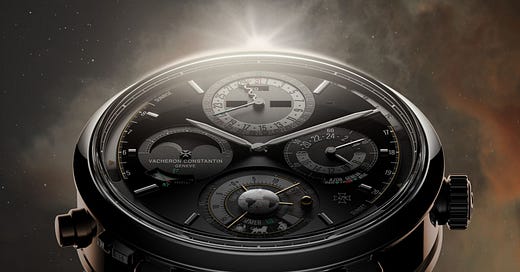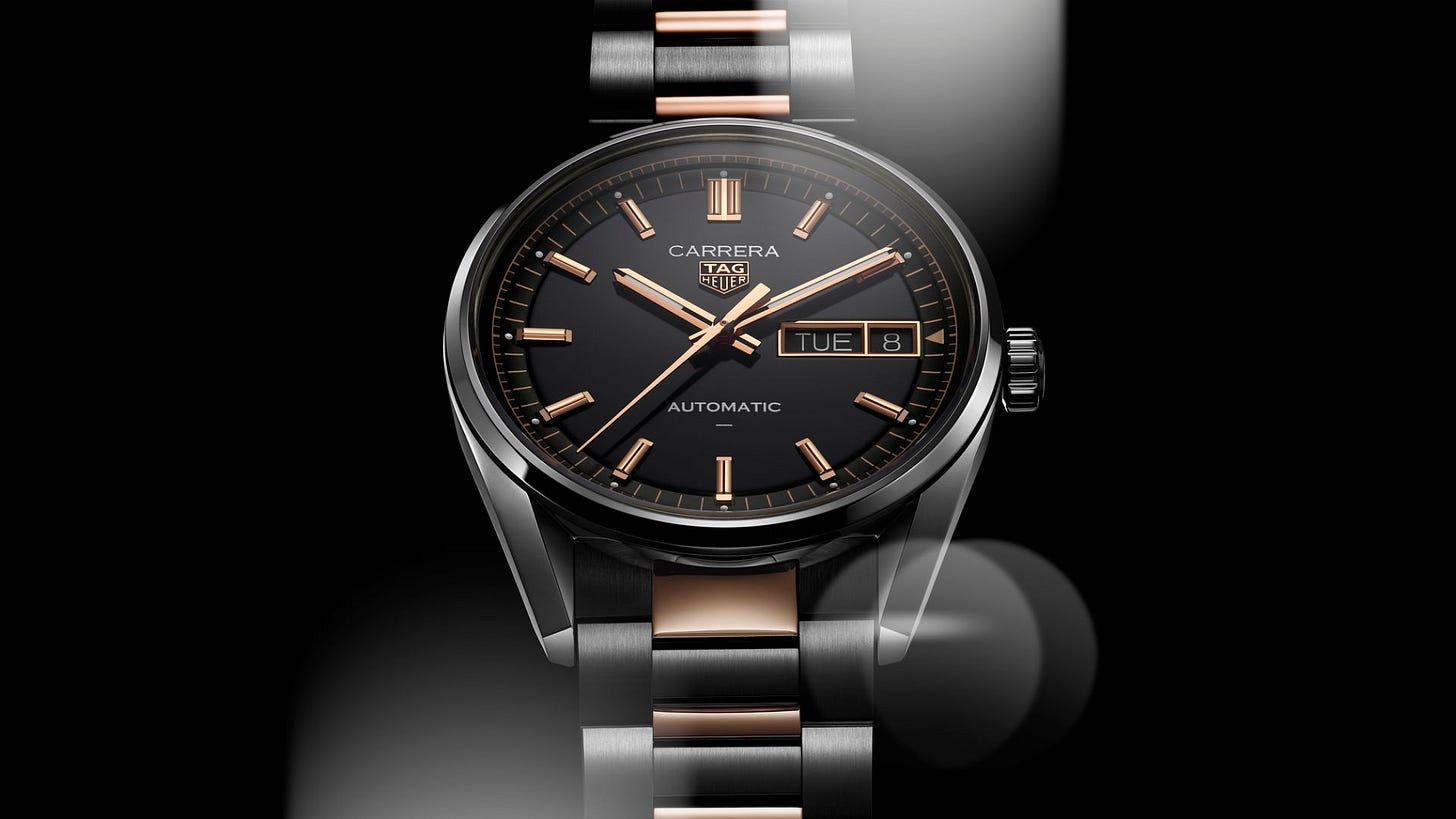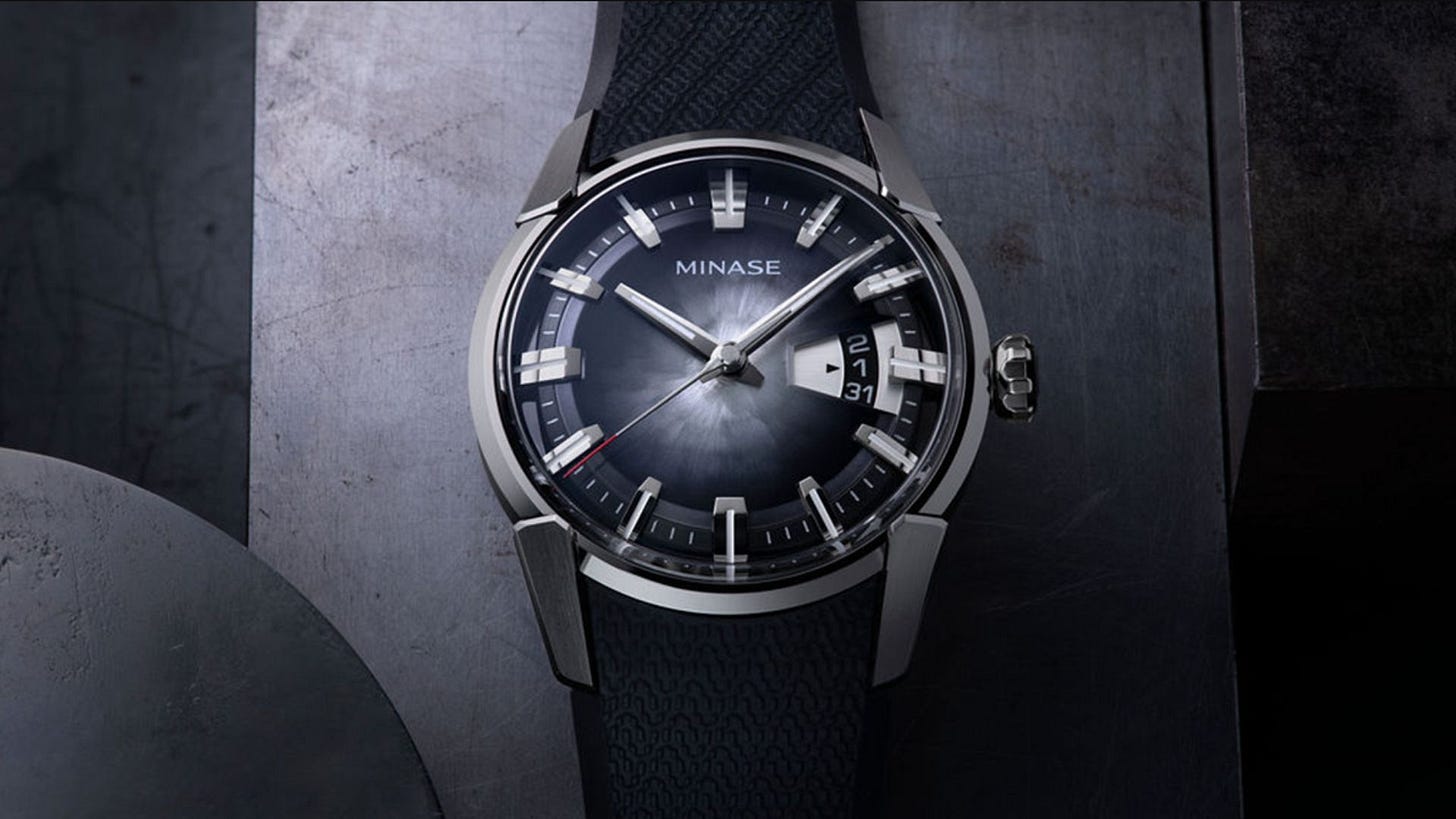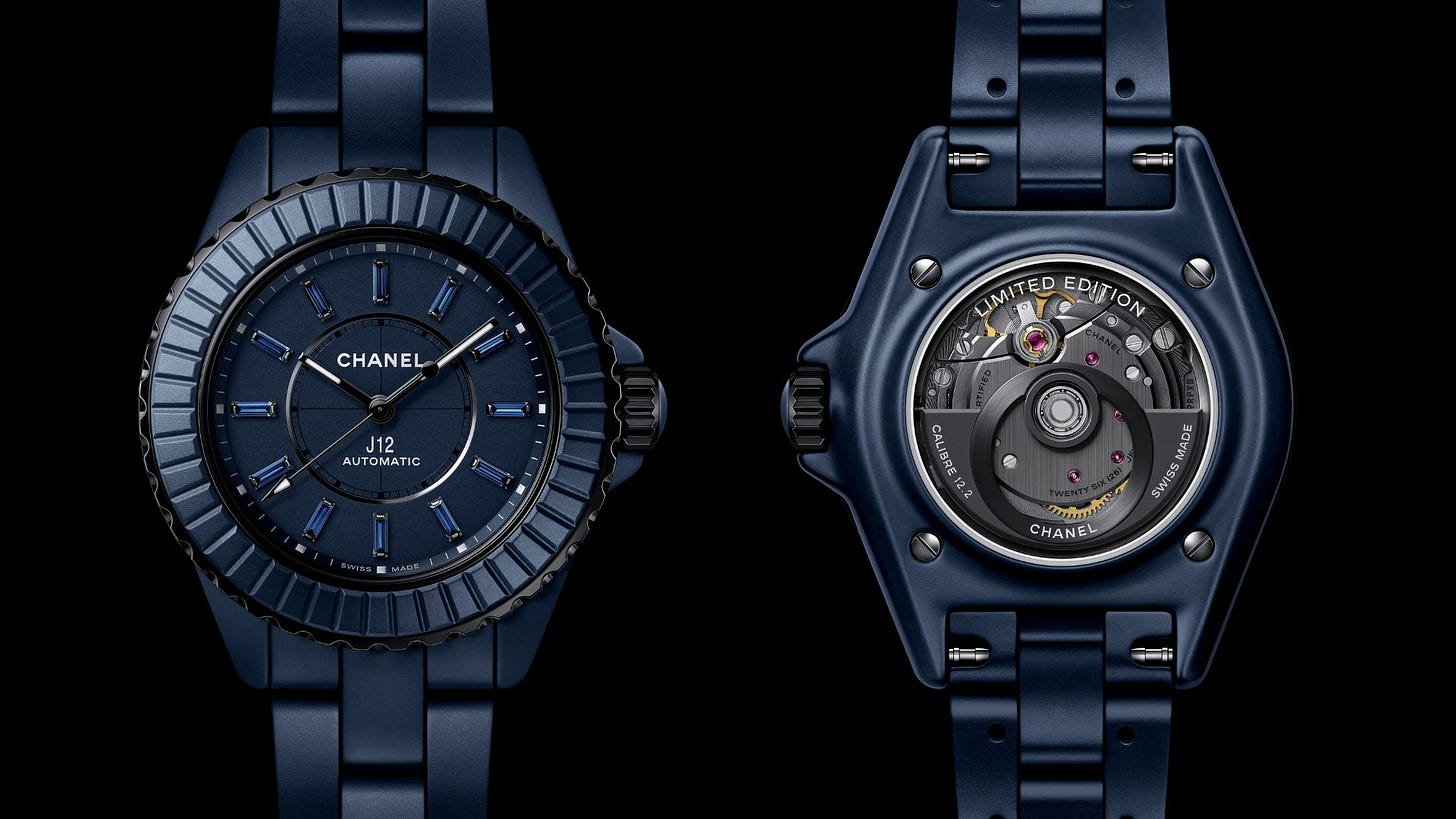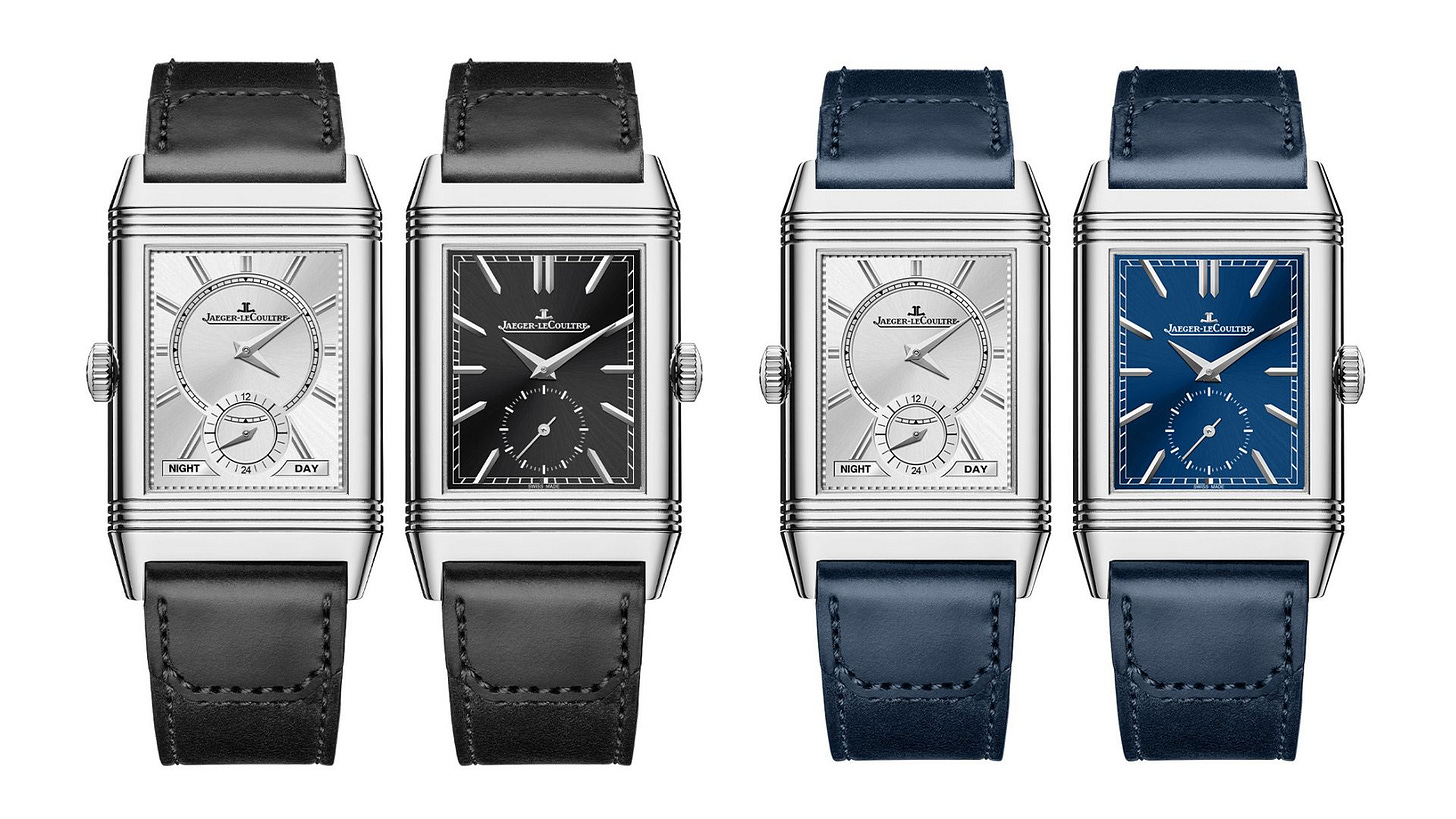Patek’s Vintage Shift, TAG Heuer’s Movement Upgrade and Louis Moinet’s Historic Tribute
This week on WorldTempus: Patek Philippe revives vintage flair, TAG Heuer upgrades the Carrera line, and Louis Moinet honors the world’s first chronograph.
WATCHES AND WONDERS 2025
"Solaria": The Most Complicated Wristwatch in the World (and Beyond)
To honor its 270th anniversary, Vacheron Constantin introduces the Cabinotiers Solaria Ultra Grande Complication – La Première, a landmark creation in the world of haute horology. Housing 41 complications within a 45 mm white gold case just 14.99 mm thick, this double-sided wristwatch stands as a new technical and artistic benchmark. It required eight years of development, 13 patent applications, and a total of 1521 components—marking it as one of the most ambitious mechanical projects ever completed by the Maison.
At the heart of the watch lies the new Caliber 3655, which delivers three distinct time readings: civil, solar, and sidereal. These are supported by a range of rare astronomical complications. Solaria calculates the Sun’s position, altitude, culmination, and seasonal declination. A world premiere function combines a split-seconds chronograph with a mobile sky chart calibrated to a reference location—offering astronomers and enthusiasts precise tracking of stellar appearances.
Solaria’s acoustic complexity is equally notable. The Westminster minute repeater includes redesigned gongs and hammers, with three forged from steel alloyed with gold for optimal inertia. The gongs’ rectangular cross-section enhances resonance. Seven patents are associated with this chiming mechanism alone, underscoring the level of technical refinement achieved.
Visually, the watch is defined by a sophisticated interplay of black, gray, and white, accented with touches of gold, green, and red. Timekeeping indicators are distributed across two faces: one for calendars and time zones, the other for celestial and chronograph functions. The sunrise and sunset disc, just 0.18 mm thick, further demonstrates the level of miniaturization involved.
More than a watch, the Solaria is a narrative in mechanical form—a tribute to the Sun, to time itself, and to the legacy of one of the world’s oldest watchmakers. Vacheron Constantin once again affirms its commitment to pushing boundaries, guided by its enduring motto: "Do better if possible, which is always possible."
Calatrava Travel Time, 10 Years in the Air
In a move that blends heritage styling with modern proportions, Patek Philippe retires its blue-dial Calatrava Pilot Travel Time and introduces a new variation dressed in a creamy ivory dial. While the watch retains its original 42 mm white gold case, the change in dial color marks a shift in character—emphasizing both vintage charm and improved readability.
First unveiled in 2015 during a period of relative optimism in the watch industry, the original 5524G sparked controversy. Inspired by early 20th-century aviation instruments, its design diverged from traditional Patek aesthetics. Yet, as often happens with the brand’s more daring creations, initial skepticism gradually gave way to admiration. Collectors eventually recognized its well-thought-out mechanics, especially the practical Travel Time system.
This dual-time mechanism, dating back to a 1959 patent, offers local hour adjustment via two pushers. Each time zone—home and local—features its own day/night indicator. Notably, the mechanism disengages from the movement during adjustments, preserving timekeeping accuracy. This balance between innovation and usability remains central to the new version.
The shift to an ivory dial accentuates the timepiece’s vintage identity. Cathedral hands, bold Arabic numerals in a 1920s-inspired font, and a sector minute track all contribute to its period styling. While some elements like the "Local" and "Home" indicators retain a more contemporary look, the visual cohesion with the brand logo at 12 o’clock helps tie the design together.
Though an onion-style crown might have pushed the retro aesthetic further, Patek Philippe deliberately avoids turning the piece into a mere homage. The modern 42 mm diameter and khaki composite strap reinforce a more robust presence, striking a balance between old-world elegance and current-day wearability.
The updated 5524G is not just a design tweak—it is a statement. A confident evolution that pays tribute to the past while standing firmly in the present.
TAG Heuer pulls off a double win with the Carrera
TAG Heuer reinforces its iconic Carrera collection with two refreshed models that strike a balance between everyday practicality and elevated watchmaking. The Carrera Day-Date and Carrera Date Twin-Time return with enhanced mechanical performance and refined aesthetics, marking a significant step forward for the brand’s most recognized line.
Both models now feature Manufacture-grade movements, replacing the previously used Calibre 5. The Carrera Day-Date is powered by Caliber TH31-02, while the Twin-Time runs on Caliber TH31-03. These movements deliver a major upgrade in autonomy, extending the power reserve to 80 hours—almost double that of the earlier versions. This allows wearers to set the watch aside for an entire weekend and return to it on Monday with no need for adjustments.
The movement design itself has evolved. The oscillating weight has been reimagined with a more angular form, echoing the aesthetics of TAG Heuer chronographs. In addition, traditional circular graining gives way to Côtes de Genève across the full movement, offering a more refined finish and a stronger mechanical identity. Attention to detail in the rotor and balance architecture further elevates the technical credibility of both models.
The watches retain the now-signature glassbox sapphire crystal, first reintroduced in the Carrera Chronographs two years ago. This sharply domed profile enhances visibility while giving the case a more fluid silhouette. Combined with a broader dial opening and gentler case lines, the overall design feels more open and accessible.
Dial options include black, blue, or smoky red for the Day-Date, and green for the Twin-Time, which also features Arabic numerals and a 24-hour flange for clarity. All models are offered on a steel bracelet, with the exception of a perforated leather strap available for the black Day-Date.
TAG Heuer delivers a thoughtful evolution—subtle yet meaningful—affirming the Carrera’s continued relevance beyond the racetrack.
Minase: A Rising Star in Japanese Watchmaking with a Singular Identity
Minase is quietly establishing itself as one of the most distinctive names in contemporary Japanese watchmaking. Though relatively young, the brand has developed a strong identity through refined craftsmanship, unique case architecture, and a philosophy centered on long-term ownership. Producing fewer than 500 watches per year, Minase appeals to collectors seeking rarity, authenticity, and uncompromising quality.
The brand’s origin is rooted in technical excellence. It emerged in 2005 as a spin-off from Kyowa, a precision tool manufacturer founded in 1963, renowned for machining and finishing expertise. Located in Japan’s Akita Prefecture, Minase was born to apply these skills to watchmaking. This heritage is visible in its finishing techniques, particularly the use of “Sallaz” polishing. Known for its mirror-like effect on flat surfaces, this method is identical to what another major Japanese house refers to as “Zaratsu.” In fact, “Zaratsu” is believed to be a Japanese mispronunciation of the Swiss-origin name “Sallaz,” highlighting the shared lineage between the two methods.
Minase’s case construction also sets it apart. Most models feature a distinctive “case-in-case” architecture. The external case houses an internal structure on which the dial sits, creating a visual impression of floating components. This construction allows light to enter around the dial, resulting in striking contrasts that resonate with traditional Japanese aesthetics. It also forms the basis of Minase’s “MORE” philosophy—Minase Original Rebuild Equation—which emphasizes modular design for ease of maintenance and full component repairability.
The brand has recently embraced the growing international demand for Japanese craftsmanship, with nearly half of its sales now outside Japan. Positioned between CHF 4,000 and 5,000, Minase watches offer strong value within the independent watchmaking scene. From March 31 to April 3, the brand will exhibit near Palexpo during Watches and Wonders Geneva, by appointment only.
CEO INTERVIEWS
Arnaud Chastaingt, Director of the Chanel Watchmaking Design Studio and the J12 BLEU
As the J12 celebrates its 25th anniversary, the director of Chanel's Watchmaking Design Studio reflects on the brand’s journey with the iconic timepiece and the launch of the new J12 BLEU. This milestone has not only been an opportunity to celebrate the legacy of the J12 but also to push the boundaries of innovation and creativity.
When asked about the significance of the J12's anniversary, the designer expressed how time seems to have flown by since he first discovered the watch. "It was like an electric shock rendering me intensely aware that watchmaking also represented a vast creative territory," he recalled. Over the years, the J12 has remained his muse, continuously inspiring him to explore new territories within watchmaking.
The creation of the J12 BLEU was a result of years of experimentation, particularly with the unique combination of materials and colors. Chanel’s mastery of ceramics played a crucial role in the process. "Gabrielle Chanel showed on several occasions in her creations that the combination of blue and black could be very successful," he shared. The challenge was to achieve a harmonious blue that would work in various lighting environments without changing hues dramatically. After five years of tests and adjustments, the final result was a refined, elegant blue that perfectly complemented the matte ceramic and blackened gold adorned with sapphires.
The most complex aspect of the J12 BLEU's creation was developing the new ceramic color, a process likened to Grand Feu enamel. The color’s appearance varied depending on the environment, and the designer spent time calibrating the tones to achieve an elegant, universal blue that would look stunning in any setting.
The J12 BLEU’s innovation extends beyond color. The watch features a diamond at the center of the flying tourbillon, embodying Chanel’s signature male-female duality. The precious diamond, set in the mechanical tourbillon, reflects the harmony between femininity and the intricate engineering of the timepiece.
While this new ceramic color is currently available in limited editions, the designer hinted that future models might feature the same striking blue. At Watches and Wonders, the J12 BLEU will be one of the highlights, alongside other innovative creations, including a bold enamelled ceramic model. Chanel continues to push the boundaries of watchmaking with a commitment to creativity, craftsmanship, and emotional resonance.
Jérôme Lambert Returns to Jaeger-LeCoultre and Redefines the Reverso Legacy
Jérôme Lambert’s return as CEO of Jaeger-LeCoultre marks a pivotal moment for the Maison. After seven years in Richemont’s executive leadership, his desire to reconnect with a manufacture driven by creativity and craftsmanship brought him back to the Vallée de Joux. “I missed the teams of a Maison like Jaeger-LeCoultre, as well as the creative content and emotion it generates,” he reflects.
Under his renewed leadership, the brand enters a new phase, one anchored in deeper mastery of rare crafts, elevated complication culture, and enhanced retail experiences across its global network of 60 boutiques. Lambert sees boutique expansion not in numbers, but in experiential scope—prioritizing immersive spaces like the Ateliers d’Antoine to better engage clients.
Central to this year’s focus is the Reverso. Now 94 years old, the collection showcases the Maison’s mechanical ingenuity through 20 new references, spanning jewelry pieces, stylistic tributes, and grand complications. The Reverso Tribute Minute Repeater exemplifies this with its slender 12 mm profile housing an acoustic and technical tour de force. “Our watchmakers constantly set themselves new challenges,” says Lambert, crediting the brand’s drive for innovation to its signature culture of ‘reasonable irrationality.’
Among the standout novelties is the Reverso "Or Déco." Inspired by a bracelet-first approach, the Milanese mesh design blends seamlessly with a 5N pink gold case and deep, textured dial—delivering refined elegance at just 7.5 mm thick. Meanwhile, the introduction of the Reverso Tribute Enamel ‘Shahnameh’ underscores Jaeger-LeCoultre’s dedication to artistry and heritage.
Beyond product, Lambert’s vision is clear: preserve and transmit watchmaking culture. With 180 métiers housed under one roof, from enamelers to grand complication specialists, Jaeger-LeCoultre must “transform this knowledge into emotion.” That emotional connection—rooted in skill, history, and human ingenuity—is the legacy Lambert aims to safeguard and amplify in his second chapter at the helm.
Julien Tornare Revitalizes Hublot with a Vision of Bold Innovation and Watchmaking Substance
Since taking over as CEO of Hublot in September 2024, Julien Tornare has focused on reconnecting the brand with its disruptive roots. His first move was to meet with clients, retailers, media, and employees worldwide to assess the brand's position—especially in a shifting economic environment. What he discovered reaffirmed his belief that Hublot, known for its pioneering spirit under Carlo Crocco and Jean-Claude Biver, had gradually moved toward a more conventional image. Tornare quickly decided to revive Hublot’s bold personality and reinstate the unexpected at every level of the brand experience.
This return to form coincides with a year of renewed optimism. Despite a complex market, early signs in 2025 are encouraging. A major milestone will be the 20th anniversary of the Big Bang at Watches and Wonders, marked by commemorative models that fuse signature elements from the past two decades. One-off editions and creative presentations are planned to make a statement—visually and technically—about Hublot’s continued relevance.
A cornerstone of Tornare’s strategy is emotional engagement. He highlights three territories where Hublot has built strong connections: music, sport, and art. Upcoming initiatives include the launch of a Hublotista World Tour and the creation of an art gallery within the brand’s expanding Manufacture, reinforcing Hublot's commitment to cultural resonance.
Equally important is restoring recognition of Hublot’s watchmaking excellence. Long acknowledged for its innovation in sapphire and ceramic materials, the brand’s technical credibility is often underestimated. “We need to remedy this underestimation of Hublot’s watchmaking substance,” Tornare asserts. Movements such as the Unico and Meca-10 will play a greater role, alongside continued use of the legendary El Primero caliber. A new production facility will further strengthen in-house capabilities, ensuring Hublot’s technical foundation supports its avant-garde spirit.
By embracing its core identity while enhancing transparency and horological depth, Hublot under Tornare is positioning itself not only as a creative powerhouse but as a Manufacture worthy of lasting recognition.


